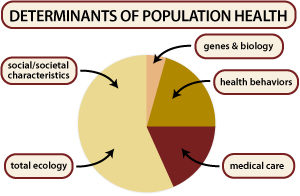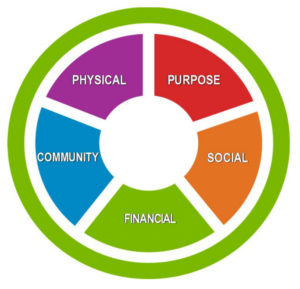During the COVID-19 pandemic, people spent a lot of time isolated and indoors, which helped foster an environment where some people now feel lonelier than ever. The result is a loss of social connectedness—the degree to which people feel the social connections and relationships in their lives to satisfy their wants and needs. When social…
Your Welcoa membership has expired.
Workplace Wellness Reality Check: 7 Critical Shifts Needed to Maximize the Impact on Your Organization and its People
Here are the seven critical shifts needed in order for employee wellness/wellbeing efforts to have a positive and sustainable impact on your organization and its people.
1. Stop Treating Adaptive Challenges like Technical Problems.
As human beings, we face two main types of challenges: technical and adaptive.
- Technical challenges are those challenges that have a pretty straightforward solution; you do X or Y. Because they are straightforward, we can use our existing knowledge and skills (or easily obtain or find the necessary resources) to solve them.
- Adaptive challenges, on the other hand, are more complex and have us venturing into uncharted territory; there is no known solution. In fact, relying on our existing knowledge and resources and past experiences won’t work; and we can’t just will ourselves to the solution. We can only solve them by reframing how we think and operate (which usually involves experiencing deep discomfort).
We don’t typically like sitting in a space of discomfort and the unknown, so we look for “quick fixes” or “magic bullets” rather than acknowledging the complexity and uncertainty that accompanies adaptive challenges. Consequently, we end up using mismatched solutions by trying to apply technical fixes to adaptive challenges and wonder why it only works temporarily – or not at all.
The reality is that most wellbeing challenges we face require adaptive change. Sure, there are areas where we certainly can benefit from additional knowledge, skills and resources (i.e., technical solutions), but usually it’s our own thinking and Immunity to Change that gets in our way. Even if we set aside decades and hundreds of research studies on incentives showing they, at best, work for short-term compliance but don’t result in sustained change, we can see why this approach to change is flawed; incentives are trying to “get” people to change by using a technical solution to what is usually an adaptive challenge.
In fact, Ronald Heifetz (researcher and guru in this space) put it best when he said:
“The single biggest failure of leadership is to treat adaptive challenges like technical problems.”
2. Rethink Tying Health Behaviors to Health Insurance Premiums.
The practice of varying health insurance premiums based on employee health behaviors is widespread. However, it is a flawed strategy not supported by the research:
- Making health insurance premiums contingent on health behaviors became commonplace in 2010 due to the Wellness Provisions in the Affordable Care Act. The problem is that these provisions were largely based on claims from Safeway about their program – which turned out to be untrue.
- Even if we ignore the Safeway issue and examine the research about this program design in general, the data doesn’t support its effectiveness. A study published in the New England Journal of Medicine by behavioral economist Dr. Kevin Volpp and colleagues concluded,
“Although it may seem obvious that charging higher premiums for smoking (body mass index, cholesterol, or blood pressure) would encourage people to modify their habits to lower their premiums evidence that differential premiums change health-related behavior is scant.” Indeed, we’re unaware of any insurance data that convincingly demonstrate such effects.”
- Wellness programs do not result in a ROI when it comes to healthcare costs. When you review the non-vendor sponsored research, this becomes clear.
- There are numerous other reasons to stop this particular practice as well that include ethical issues, eroding employee engagement, and more.
3. Realize That Health Behaviors Are Not What’s Driving Healthcare Costs.
Hardly a day goes by without hearing the claims that our unhealthy behaviors lead to chronic disease and account for the majority of healthcare costs. However, what we know from the Centers for Disease Control and Prevention is that individual health behaviors only account for not quite 25% of the disparities in health across our country. Social determinants of health play a much larger role.

In his book, The Status Syndrome – How Social Standing Affects Health and Longevity, Dr. Michael Marmot (the world’s leading researcher on the social determinants of health) reviews the evidence in detail. In addition to exploring how significantly our longevity is impacted by where we live, he sums up what really matters when it comes to wellbeing:
“For people above a certain threshold of material well-being, another kind of well-being is central. Autonomy – how much control you have over your life – and the opportunities you have for full social engagement and participation are crucial for health, well-being and longevity.”
In his book, The Last Well Person, Dr. Nortin Hadler also describes the importance of these social determinants of health:
“At least 75% of the hazard to longevity can be captured with measures of socioeconomic status and job satisfaction. Socioeconomic status overwhelms and subsumes all the measured biological risk factors for all-cause mortality as well as most other mortal and illness end-points.”
Furthermore, we know that physical health does not translate to business outcomes. In a bold move, LuAnn Heinen, Vice President of the National Business Group on Health stated,
“The evidence is becoming clearer that physical health is not the main driver of productivity, performance, and business outcomes.”
Our healthcare system is certainly complex. But costs are not out of control because of our failure to eat more broccoli and exercise. In his book, How We Do Harm, Dr. Otis Brawley (the chief medical and scientific officer of The American Cancer Society) exposes the deep systemic issues of our healthcare system. He says,
“The system is not failing. It’s functioning exactly as designed. It’s designed to run up health-care costs.”
We need to stop focusing on primarily physical health and providing wellness programs thinking this will solve our healthcare crisis. We need to better support the social determinants of health.
4. Accept That Employee Wellbeing Really DOES Matter.
Just because the typical approach to wellness is flawed; health behaviors are not what’s driving healthcare costs; and wellness programs are not effective in reducing healthcare costs, does not mean that organizations should ignore wellbeing all together. In fact, research supports that, when it comes to organizational effectiveness and performance, wellbeing profoundly matters; the key is how companies are viewing and supporting it.
- Gallup’s research has provided great insight into just how important wellbeing is. However, it’s much more than physical health and biomedical risk factors. In fact, career wellbeing (purpose) has the largest impact on every other area of wellbeing; if people are thriving in their career wellbeing, they are 50 percent more likely to be thriving overall. And each area is interrelated; focusing too much on any one area can lead to frustration – and is about as effective as a game of Whack-a-Mole.

- A hallmark of successful organizations (such as those on the Best Companies to Work For list, Firms of Endearment, Deliberately Developmental Organizations, and Barry-Wehmiller) is that they nurture employee wellbeing – without incentives or expectations for participation. They focus on supporting their people, not the numbers. In doing so, they create the conditions for employees to tend to all areas of wellbeing and integrate their personal and professional lives. Yet, their numbers blow their competition out of the water because they put their people first. In his book, The Best Place to Work, Ron Friedman put it well when he wrote:
“The future of great workplaces lies in helping employees fuse their personal and professional lives in ways that position them to deliver their best work.”
5. Acknowledge How Profoundly Organizational Wellbeing Impacts Employee Wellbeing.
Organizational health is critical for both the success of the organization itself but also the people who work there. In his book, The Advantage: Why Organizational Health Trumps Everything Else in Business, Patrick Lencioni says that an organization is healthy when it has integrity, “when it is whole, consistent and complete, that is, when management, operations, strategy and culture fit together and make sense.” Healthy organizations have minimal politics, minimal confusion, high morale, high productivity and low turnover. And impact that organizational health has on individual wellbeing is clear:
- Research conducted by Jeffrey Pfeffer (professor of organizational behavior at Stanford University’s Graduate School of Business) concluded that unhealthy workplaces can cause up to 125,000 employee deaths each year and up to $130 billion in excess annual company costs. Pfeffer states:
“Many of the individual behaviors you are focusing on in your health and wellness programs (such as) stop smoking, eat better, exercise more, are in fact the consequences of the environments in which they (employees are working. If you work people to death, of course they are going to smoke more, drink more and eat worse.”
- And the quality of your leaders plays a critical role not just in the health of the organization but in employee wellbeing. If you’ve ever worked for a bad boss, it’s probably not surprising that several research studies have linked the leadership styles of “bad bosses” to high blood pressure, anxiety, depression, sleep problems, increased risk for heart disease and heart attack and even unhealthy behaviors such as smoking, excessive alcohol use and over-eating. However, leaders with a transformational leadership style are associated with increased employee wellbeing. Therefore, it is critical for organizations to invest in a comprehensive strategy to ensure bad bosses are not taking over and damaging the culture while also effectively developing leaders to navigate change and support a thriving workplace culture. Most people could care less if their manager participates in or supports wellness programs; they care how their manager treats
6. Be Intentional About Nurturing Your Workplace Culture.
“Culture” has become a popular buzzword; yet workplace culture is frequently misunderstood. Consequently, many efforts to nurture or change culture fall flat because they are addressing climate or environment, not culture.
Edgar Schein, PhD, is the guru and leading researcher on organizational culture. He describes culture as “the hidden force that drives most of our behavior both inside and outside organizations.” Schein says of culture:
- It includes the unconscious, taken-for-granted beliefs, perceptions, thoughts and feelings.
- It goes beyond “it’s the way we do things around here,” the company climate, basic values, etc. These are all manifestations of the culture.
- The culture of an organization plays a significant role in shaping employee behavior and fostering organizational change.
This distinction is critical. Unfortunately, in the traditional world of employee wellness, a “culture of health/wellness” has an entirely different and narrower meaning – primarily referring to the climate or the manifestations of the culture. When most health and wellness professionals describe a “culture of health,” “culture of wellness” or “healthy culture,” they are referring to policies, procedures, communication practices, programs, rewards and leadership behaviors that support so-called healthy lifestyle choices and behaviors.
From an organizational perspective, the potential benefits to the company from initiatives that support healthy lifestyles pale in comparison to the benefits of creating a truly thriving culture where politics and confusion are minimal, relationships and open communication are cherished, and employees are intrinsically motivated to come to the workplace and be involved in something larger than themselves, something that contributes meaning and purpose to their lives.
And it’s very possible for an organization to have a healthy climate (often referred to as a “culture of health”) yet have an unhealthy or dysfunctional culture. What do you think would most improve the wellbeing of the employees who are struggling to be productive because they have a difficult boss?
- A workplace with minimal confusion and positive working relationships where they felt valued for their contributions?
- Or a workplace that offered free fitness trackers or healthy food discounts?
As the late Peter Drucker once said,
“Culture eats strategy for breakfast, operational excellence for lunch, and everything else for dinner.”
Thriving workplaces (like those previously mentioned) intentionally nurture their culture; they are fierce in supporting and protecting their culture that values people over profit. As a result, they financially prosper.
7. Rethink and Reposition Your Wellness Strategy to Build a Thriving Organization.
So we know that employee wellbeing matters and that it is profoundly impacted by organizational health. How do you reposition your wellness strategy so both the organization and your people benefit?
- First and foremost, remove the carrots and sticks and using technical fixes for what are adaptive challenges. Focus on supporting better thinking, navigating adaptive change and overcoming psychological Immunity to Change rather than behavior modification. After all, behaviors are merely the manifestation of how we think.
- Next, uncouple wellness from the health plan altogether. It’s not a cost-savings strategy. With the exception of some good healthcare consumerism and literacy initiatives, it doesn’t belong there at all.
- Shift from offering wellness programs to employee wellbeing as part of your cultural brand – an over-arching umbrella that encompasses everything you do to support employees in bringing their best selves to work and home each day. Consider embedding it within your leadership and people development strategy instead.
Use the Thriving Organization Pyramid™ as your guide for what to focus on first (which can be downloaded for free here).
- If you have a strong base (i.e., thriving organizational wellbeing), then a well-rounded approach to support wellbeing will likely be well-received and effective in enhancing your organization and its people. Just be sure to provide resources FOR and WITH employees and avoid doing “wellness or else” to them. And ensure any provider of such services first pledges to do no harm and endorse the Employee Health & Wellness Program Code of Conduct.
- However, if your base needs work, your employees’ wellbeing will benefit much more from redeploying resources that might be currently spent on things like tracking portals, biometric screenings, health risk assessments, incentives, wearable devices, and behavior change challenges to strengthen the base. This includes developing leaders, clarifying and aligning with your WHY (purpose), strengthening communication, and putting people back to the forefront. Then, over time, you can move to supporting wellbeing at the top of the pyramid.
If you want to learn how to make this shift in your wellbeing efforts, please register for our pre-conference workshop, Ushering Wellbeing Into the 21st Century: What We Need to Learn from Business (And Quickly!), at the upcoming WELCOA Summit in Omaha, NE on August 28, 2017 from 9 a.m. – 5 p.m.




